Back pain is a very common complaint. More than 50% of all individuals will have low back pain at least once in their lives.
Back pain is a common reason for absence from work and doctor visits. Although back pain may be painful and uncomfortable, it is not usually serious.
Even though back pain can affect people of any age, it is significantly more common among adults aged between 35 and 55 years. Experts say that back pain is associated with the way our bones, muscles and ligaments in our backs work and connect together.
Pain in the lower back may be linked to the bony lumbar spine, discs between the vertebrae, ligaments around the spine and discs, spinal cord and nerves, lower back muscles, abdomen and pelvic internal organs, and the skin around the lumbar area. Pain in the upper back may be due to disorders of the aorta, tumors in the chest, and spine inflammation.
Sciatica is the name given to pain caused by irritation of the sciatic nerve. Anything that irritates this nerve can cause pain, ranging from mild to severe. Sciatica is usually caused by a compressed nerve in the lower spine.
Often, the term “sciatica” is confused with general back pain. However, sciatica is not just limited to the back. The sciatic nerve is the longest and widest nerve in the human body. It runs from the lower back, through the buttocks, and down the legs, ending just below the knee.
This nerve controls several muscles in the lower legs and supplies sensation to the skin of the foot and the majority of the lower leg. Sciatica is not a condition, but rather a symptom of another problem involving the sciatic nerve. Some experts estimate that up to 40 percent of people will experience sciatica at least once in their life
The human back is composed of a complex structure of muscles, ligaments, tendons, disks and bones – the segments of our spine are cushioned with cartilage-like pads called disks. Problems with any of these components can lead to back pain. In some cases of back pain, its cause is never found.
Most physicians will be able to diagnose back pain after carrying out a physical examination, and interviewing the patient. In the majority of cases imaging scans are not required.
If the doctor or patient suspects some injury to the back, tests may be ordered. Also, if the doctor suspects the back pain might be due to an underlying cause, or if the pain persists for too long, further tests may be recommended.
Suspected disk, nerve, tendon, and other problems – X-rays or some other imaging scan, such as a CT (computerized tomography) or MRI (magnetic resonance imaging) scan may be used to get a better view of the state of the soft tissues in the patient’s back.
- Percutaneous Vertebroplasty and Kyphoplasty:
Vertebroplasty and kyphoplasty are interventional radiology procedures in which bone cement is injected through a small hole in the skin (percutaneously) into a fractured vertebra with the goal of relieving back pain caused by vertebral compression fractures.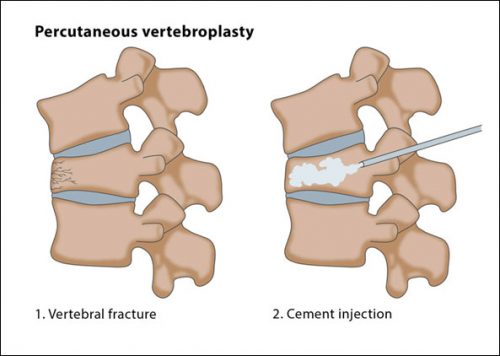
- Epidural injections (in allareas of the spine):
The use of anesthetic and steroid medications injected into the epidural space torelieve pain or diagnose a specific condition.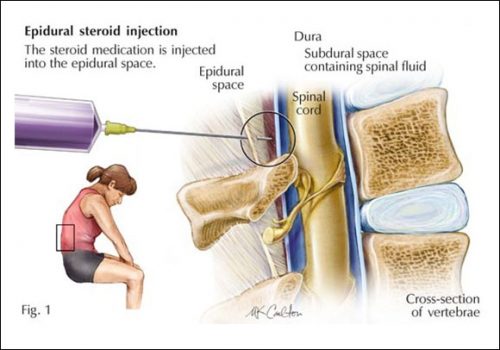
- Selective Nerve, root, and medial branch blocks:
Injections done to determine if a specific spinal nerve root is the source of pain. Blocks also can be used to reduce inflammation and pain.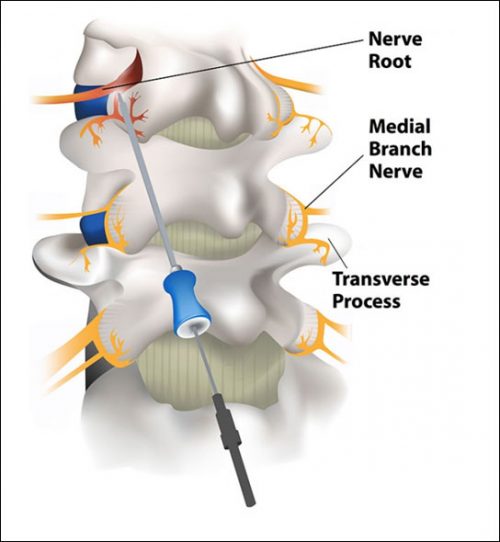
- Facet joint injections:
An injection used to determine if the facet joints are the source of pain. These injections can also provide pain relief.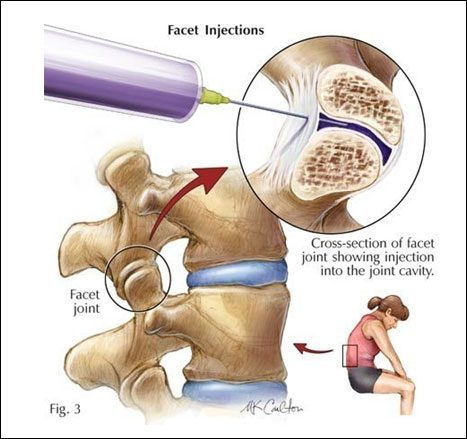
- Discography and Disc Injection: An “inside” look into the discs to determine if they are the source of a patient’s pain. This procedure involves the use of a dye that is injected into a disc and then examined using x-ray or CT scan.
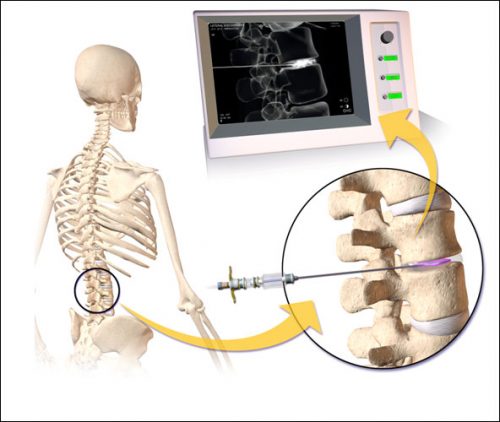
- Sacro-iliac Joint Injection:

